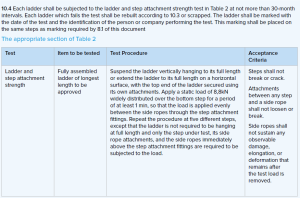The Charity
Aviation
Maritime
Learning opportunities from non-compliance reports

Initial Report
Outline:
Two reports were received recently that contained references to unusual recommendations, rules and regulations. Following the adage ‘take every opportunity to learn’, CHIRP is publishing details in the belief that they need to be promulgated more widely to prevent ships’ crews falling foul of them. Remember that other legal truism ‘ignorance of the law is no defence’.
What the reporter told us (1):
Prior to sailing, it was noticed by the pilot that the vessel had totally incorrect tracks on the ECDIS for departure. The master was requested to remove the incorrect tracks within the port limits and to monitor the vessels progress against the recommended tracks permanently displayed on both ENC and paper charts. Shortly after clearing the berth, one of the bridge team put the correct tracks into the ECDIS.
In a recent report, it was highlighted by an admiralty court that a ship was deemed unseaworthy if the correct passage plan to and from the berth was not on the ship’s charts or in the ECDIS system.
(This refers to a ship which grounded whilst leaving a port in China in 2011 – however the admiralty court ruling was only made in March 2019)
https://www.shipownersclub.com/robert-shearer-update-on-unseaworthiness-the-cma-cgm-libra/
CHIRP comment (1):
Once upon a time, course lines on a paper chart stopped on arrival at the pilot boarding station and commenced at the pilot station when sailing. With the advent of the requirement for berth to berth passage plans, the course lines were extended, often vaguely up the middle of the buoyed channel, into the port. As the ship rarely knew which berth it was going to before the pilot boarded – by which time the vessel was already in manual steering following courses TMO/PA – that was considered perfectly adequate.
Not so nowadays when pilots often come onboard and connect their own PPU’s. If the captain and the bridge team are to effectively monitor the ships progress, then the track lines loaded and displayed on the ships ECDIS need to match those already in the pilots PPU. Plotting waypoints and tracks takes time, so unless the Master/Pilot exchange (MPX) is going to become a very lengthy affair, which is not desirable, then it is beholden on the port and pilot station to inform the ship in good time before arrival at the pilot station as to which berth the ship is going to utilise and the appropriate waypoints to input into the ships ECDIS to get them there. There is an argument that by utilising a port authority’s waypoints the passage plan would no longer be the vessel’s, but if the new section of the passage plan is auto-checked with the vessel’s criteria of draft and required under keel clearance etc. by the ECDIS system, it seems to make little difference who instigated a waypoint co-ordinates.
What the reporter told us (2):
After boarding the vessel, which had a well-worn pilot ladder, the master was asked for the certificates for his ladder. He produced a surveyor’s certificate dated 6 days after the vessel’s launch date (9 years earlier). The captain was asked if he had any test certificates as required by ISO799, but he was unable to provide these. Without any available verification, it had to be assumed that the
pilot ladder had not been load tested for over 9 years rather than “at not more than 30 months intervals” as required by ISO799.
CHIRP comment (2):
Like many seafarers, CHIRP is aware of the requirements of IMO and SOLAS concerning pilot ladders and refers to the appropriate publications. For those who are not familiar with the requirements of ISO799 (2019/2020) the appropriate section 10.4 is reproduced. (see box).

Final thought:
It is quite possible that the cost of load testing a pilot ladder every 30 months is going to exceed the price of a new ladder. A simple notation in the planned maintenance schedule to renew each pilot ladder every 30 months would be simple and probably cost-effective.







